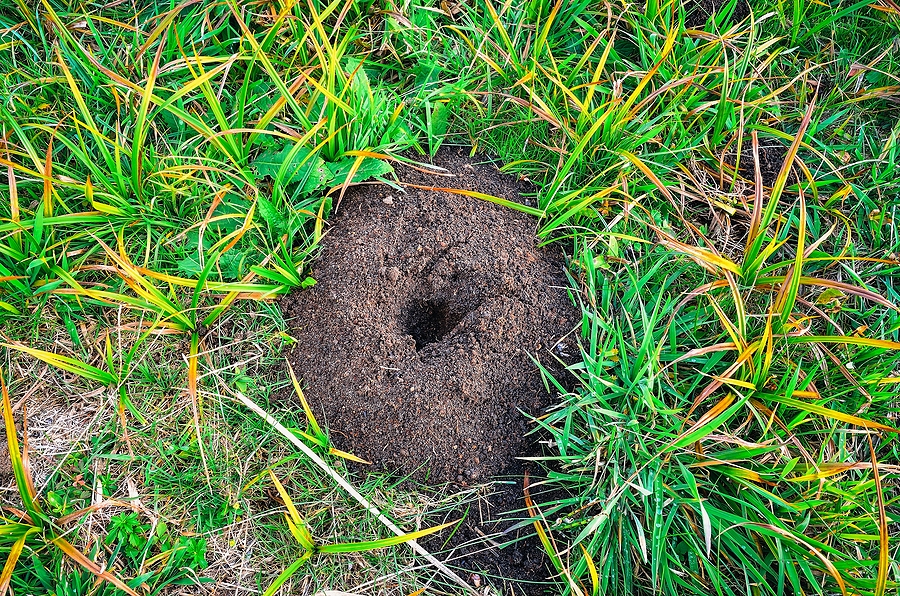The pastoral picture of a meticulously tended garden or luscious green lawn is enough to evoke envy — that is until you discover uninvited guests in the form of mole mounds and winding tunnels that have turned your sanctuary into a battleground. For gardening enthusiasts and homeowners, the challenge of mole infestations is more than a mere nuisance—it’s a battle against vermin that undermine hard work and aesthetics with their subterranean invasions.
For years, combating moles usually meant setting traps, using toxic bait, or even resorting to lethal methods. However, with the growing awareness and concern for wildlife protection, home and garden owners are turning towards animal-friendly mole repellents. But are these Eco-friendly alternatives as effective as advertised? And how can we integrate them into an effective pest control strategy?
In this extensive guide, we’ll dig into the behavior of moles, discuss the conventional methods of control, and provide you with a comprehensive look at animal-friendly mole repellents. We’ll also equip you with the “dos and don’ts” of application, and hand over a list of pro tips for the battle against these subterranean saboteurs.

Understanding the Mole and Its Misunderstood Ways
Before we explore different ways to manage mole populations, it’s essential to understand what they are and why they do what they do. Moles are small, burrowing creatures that rarely emerge onto the surface. They have adapted to a life spent underground, with distinctive paddle-like front paws, sleek fur, and small eyes suitable for their light-deprived environment.
Moles are largely insectivores, sustaining themselves by feeding on earthworms, insect larvae, and other invertebrates. Their typical tunnels serve as a path to forage for food and can run a few inches to a few feet below the ground. Unfortunately, these tunnels and molehills can inflict significant damage on yards and gardens, causing unsightly mounds and disruptions to plant roots, which leads to wilting and death.
Understanding that moles are not intentionally out to sabotage our meticulously designed landscapes, but are instead pursuing their own survival, allows us to approach control with a more measured perspective.
Conventional Mole Controls
Trapping – One of the oldest and most direct methods of mole control is trapping. This entails setting up a series of traps that are triggered when a mole passes along a tunnel. Trapping can be effective but requires the right knowledge and technique to be successful.
Baits and Poisons – Using baits and poisons to kill moles is another common method, but should only be performed by certified wildlife control operators. Potential harm to other species or pets that may come into contact with the treated areas can occur if administered improperly. Not to mention, toxins can enter the food chain with devastating effects further down the line.
Physical Barriers and Fencing – Installing fences or barriers that extend deep into the soil can prevent moles from entering certain areas. However, this is often impractical for large spaces and can be an eyesore.
Conventional methods have their place, but many home and garden owners are considering alternatives due to the drawbacks associated with trapping and toxic substances.
Eco-Friendly Mole Repellents
With a desire for more sustainable and humane pest control methods, animal mole repellents have quickly gained popularity. These products work by emitting scents, sounds, or tastes that moles find aversive, persuading them to look for more hospitable feeding grounds.
Although repellents offer a more human approach to pest management, their effectiveness can vary. However, used correctly and in conjunction with other deterrents, animal-friendly mole repellents can be a valuable part of your pest control strategy.
Scents and Taste Deterrents – Several products on the market use castor oil as their active ingredient, which is known to repel moles. These are often mixed with water and sprayed on the affected areas.
Sonic Devices – Some repellents utilize high-frequency sound waves that are unbearable for moles, while being inaudible to humans. These are then inserted into the soil at regular intervals to create a barrier of sound.
Dual Action Repellents – An advancement in repellents is the combination of scents and sounds, giving you multi-pronged protection against moles.
Selecting and Applying Animal Mole Repellents
Identifying the Right Repellent – The first step is to choose the right repellent for your situation. Consider factors such as the size of your garden, the extent of the infestation, and whether you’re dealing with a specific type of mole.
Applying the Repellent Correctly – Read the instructions carefully and apply the repellent during the appropriate time and weather conditions. Effective application means ensuring the product is evenly distributed and renewed regularly.
Maintaining the Repellent – Remember that rain and other weather conditions can dilute or wash away repellents, so monitor their effectiveness and reapply as needed.
Integrating Repellents into a Comprehensive Pest Management Plan
Repellents can be more effective when used as part of a comprehensive pest management plan integrating multiple strategies. This might include maintaining a well-aerated and healthy lawn, removing attractants, setting barriers, and possibly combining repellents with trapping or other solutions.
Expert Tips for Mole Control
To maximize the effectiveness of your repellents:
- Be Patient – Repellents don’t work overnight. Give them time to establish the aversive conditions that moles will want to avoid.
- Consistency is Key – Apply repellents as part of a consistent maintenance schedule. This will help you develop a good understanding of the patterns and areas of the infestation.
- Combine Methods – Using more than one mole control method can increase the chance of success. Repellents work well in tandem with physical barriers and sound deterrents.
Consult with Pest Control Professionals
Sometimes, an infestation may be too severe for DIY measures. Professional wildlife removal and control companies can provide effective and humane strategies tailored to your specific lawn mole circumstances. A licensed and insured wildlife operator should be adept in mole behavior, knowledgeable about the local species, and experienced in applying the most effective repellents and control methods. Contact a reputable yard mole removal service to quickly transform your mole-riddled lawn into a tranquil space that’s truly yours.
Wrapping Up
Choosing animal mole repellents over traditional control methods can offer numerous benefits. They are generally safer for the environment, pose less risk to pets and wildlife, and can be more cost-effective in the long run. Additionally, they can contribute to the broader goal of maintaining a balanced backyard ecosystem without resorting to drastic measures.
To guard your garden effectively against moles, use repellents wisely, and consider the broader context of your pest management. Remember, preparation and perseverance are your most valuable tools in the fight against moles and other pests.
In the event that repellents and DIY control methods are not making a dent in your mole problem, it’s time to bring in the professionals. Contact Mole Miners at 629-277-0933 for TWRA licensed and insured yard mole controls in Nashville, Tennessee. We serve all greater Nashville and Clarksville areas. Request a free estimate, today!
Related Posts:
Keeping Your Lawn Mole-Free: The Best Ground Mole Repellents
The Best Plants and Repellents to Keep Moles Away From Your Garden
Tips for Gardeners: How to Get Rid of Moles in Your Lawn

